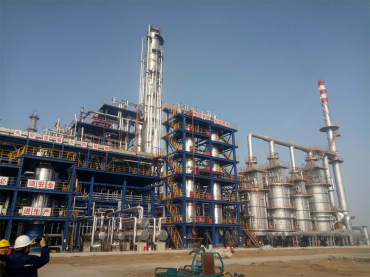SINGAPORE – The Asia-Pacific region is shifting rapidly toward increased use of highly refined base stocks as lubricant marketers take advantage of opportunities galore to promote upgrades in quality levels, an industry insider said at a conference here recently.
Despite a slowdown in finished lubricant demand since 2014, Anuj Kumar Singh, project manager of consulting firm Kline & Co., believes that the move toward use of API Group II and III base oils is accelerating in Asia, driven by original equipment manufacturer recommendations and easy availability of high performance base stocks.
The Asia-Pacific region consists of a wide spectrum of markets, ranging from high penetration of high-quality lubricants to low penetration, he explained to the audience at the ICIS Asian Base Oils & Lubricants Conference here. For example, SAE 0W and 5W grades account for more than 80 percent of passenger car motor oil demand Japan in 2018, versus less than 10 percent in Indonesia. In Japans heavy-duty motor oil segment, 15W and lighter grades accounted for 80 percent of demand, but they made up less than 40 percent in Indonesia.
Viscosity shifts in the PCMO segment create greater demand for Group III base stocks, while those in the HDMO segment create demand mainly for Group II base stocks in Asia, he noted.
Singh also questioned whether Group I base oils will continue to play a role. He is convinced that some Group I cuts, such as bright stock, will retain their importance in a number of industries, and some Group II producers are starting to manufacture a Group II bright stock for that very reason.
Despite facing the double whammy of declining technical demand and competition from Group II and III base stocks, Group I is still an important component of blending formulations in the region, he noted. Applications that demand Group I base stocks include industrial engine oils for the railroad, natural gas, marine and aviation segments.
The high solvency offered by Group I cuts is also critical in applications such as metalworking fluids and greases. Diluent oil will also remain a key use for Group I oils.
Some Group I plants in the region have shut down for economic reasons, but a significant portion of capacity is owned by national oil companies and is not easy to rationalize, Singh said.
There is also some inertia among blenders, who dont want to change base stocks, and the cost of switching over and easy availability of cheaper Group I base stocks is a significant factor for small-scale blenders, he explained.
Singh also said that base stock capacity in the region is growing far faster than demand and that this dampens the outlook for refiners that are already operating on thin margins. As an example, he mentioned the rapid growth in production capacity in China – where a number of new plants have started up in recent months – and pointed out that not all of them can operate at high rates.
Competition has also increased, as base stock suppliers from other regions show greater interest in Asia-Pacific, especially India. The South Asian giant is attractively close to Middle East producers that are now actively supplying customers there. Singh mentioned that Saudi Aramco is the Middle Easts main supplier of Group II, while Abu Dhabi National Oil Co., Shell and Neste are the key suppliers of Group III, and they all seem to be increasing their exports to Asia-Pacific.
In Asia-Pacific, markets are highly price conscious, and there are many suppliers to buy from, so competition grows. The emerging supply-demand scenario will make the base stocks market a buyers market, Singh observed.
Base oil capacity exceeds demand in Asia, but it is a business that still seems profitable. Thats because Asia does not only cater to the region, but exports to areas supply shortages of specific grades, such as the North American market.
A net deficit of Group I persists in Asia, with production in China, Japan and Southeast Asia – mainly Singapore and Indonesia – not deemed sufficient to meet demand. No new Group I capacity is planned in the future, but long supply in Europe allows for shipments to move from that region to Asia.
Conversely, Group II and III capacity has grown steadily in Asia and will continue to do so, with new plants and expansions coming on stream in the next few years.
Several factors will dampen the lubricants demand outlook in the future, including uncertain economic prospects, trade relations, increased penetration of electric vehicles and, most importantly, extended oil drain intervals. However, Singh remains optimistic that the market will find a way to deal with the supply-demand imbalance.
Since the base stocks market is a global market, regional supply-demand balances are immaterial as trade happens freely in all grades, he concluded.

Photo courtesy of Shandong Weifang Shida Changsheng Energy Technology Co.